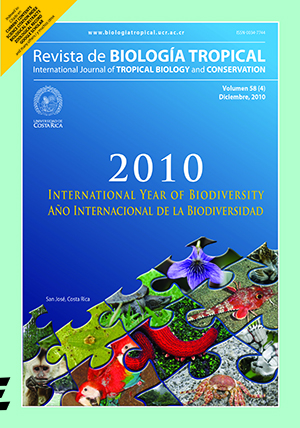Abstract
The Mato Grosso is a typical Atlantic Forest stream located on the East coast of Brazil, approximately 70km from Rio de Janeiro city. From its source at about 800m a.s.l, the stream drains a 30km2 area of the Northwestern part of the municipality of Saquarema, state of Rio de Janeiro and flows into the Saquarema Lagoon system. We hypothesized that fish species occupy distinct mesohabitats, with the prediction that their occurrences and densities differ among the microhabitats of riffles, runs and pools. A 250m-long stretch of the stream located in its uppermost part was selected for this study, where it becomes second-order. Mesohabitat description and their fish characterization were undertaken. Fish sampling was conducted by electroshocking and after their identification and counting, they were returned to the stream. For mesohabitat characterization, a Discriminant Function Analysis (DA) was applied. The total number of samples was estimated by the Zippin method and the recorded densities were used as an Indicator Species Analysis (ISA), followed by a Monte Carlo test for 1 000 permutations. The DA significantly separated the three predetermined mesohabitats (pool, riffle and run) (WL=0.13, F=187.70, p=0.001). We found five species of fishes, belonging to four families and three orders. The fishes Rhamdia quelen, Phalloceros harpagos, Pimelodella lateristriga and Astyanax taeniatus are indicators of the pool environment in the Mato Grosso stream, whereas Characidium cf. vidali is an indicator of the riffle environment. The Monte Carlo test detected non-random mesohabitat use only for P. lateristriga and A. taeniatus in the pools and for Characidium cf. vidali in the riffles. We concluded that the Mato Grosso stream contains three well-defined mesohabitats, with indicator species present in two of these mesohabitats.##plugins.facebook.comentarios##

This work is licensed under a Creative Commons Attribution 4.0 International License.
Copyright (c) 2010 Revista de Biología Tropical
Downloads
Download data is not yet available.


